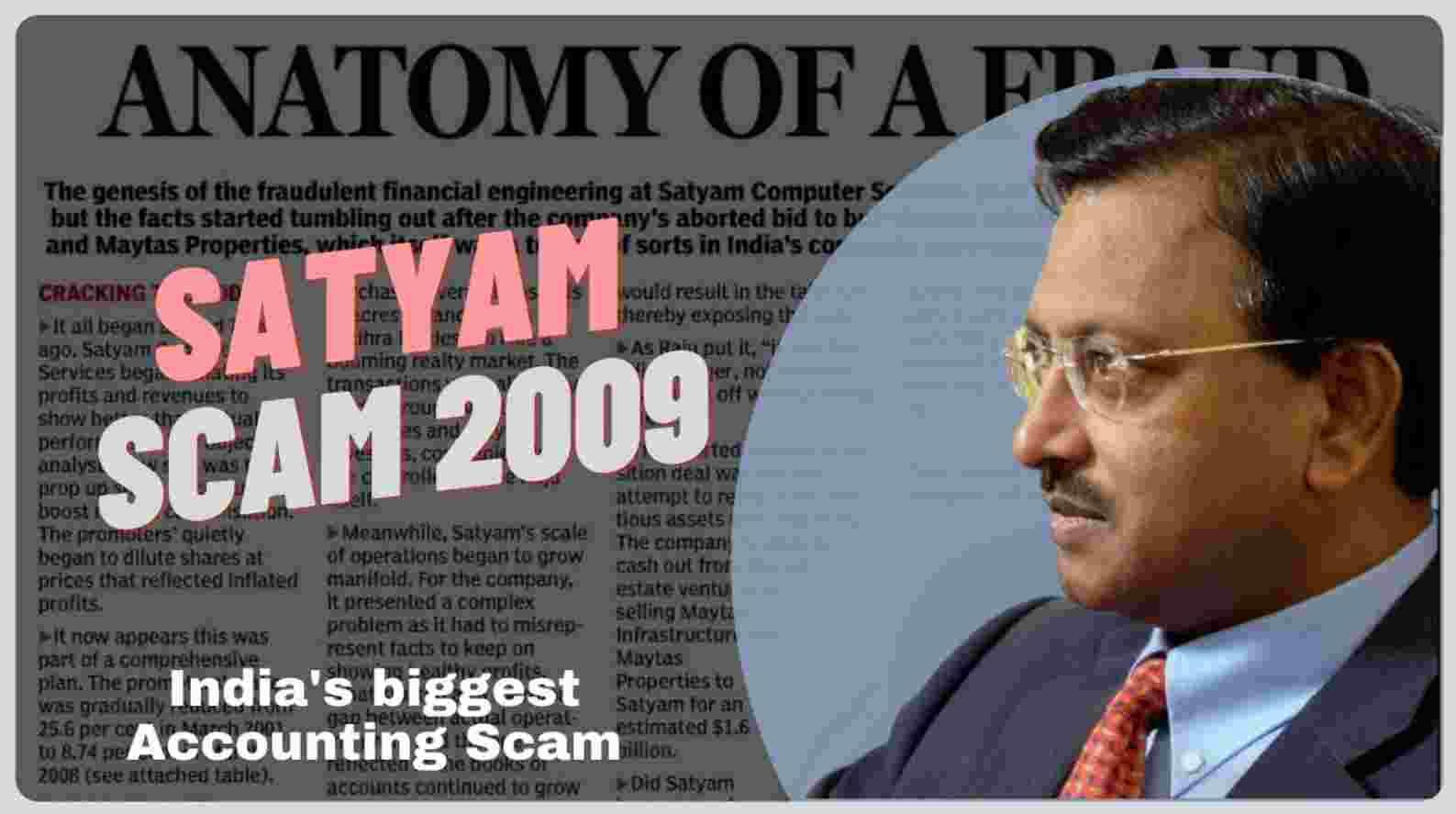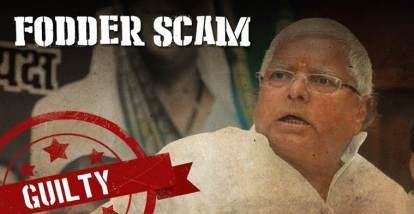INTRODUCTION:
The Satyam scam was a major corporate fraud in India in 2009. Ramalinga Raju, founder and chairman of Satyam Computer Services, admitted to manipulating the company’s accounts and inflated profits for years. The value of the fraud was estimated at approximately rubles. 14,000 crore and shook the confidence of investors, shareholders and stakeholders in the Indian business sector. The Satyam fraud case rocked the markets, especially Satyam’s investors, and also damaged India’s image in the global market. So let’s dive into the topic by understanding what is Satyam Scam.
ABSTRACT:
According to Enron, WorldCom and Satyam, corporate accounting fraud is a major problem that is growing in both frequency and severity. Research results showed that the growth of fraud weakened the credibility of financial statements, caused significant financial losses and weakened investor confidence in the usefulness and reliability of financial statements. The increase in white-collar crimes calls for harsher penalties, exemplary punishments, and effective law enforcement with the right spirit. An in-depth study and analysis of the Satyam Computer creative accounting scandal that highlighted the importance of ethical and corporate governance (CG) is attempted. The 2009 fraud perpetrated by the founders of Satyam is proof that “behavioral science is largely undermined by human greed, ambition and hunger for power, money, fame and glory”. Unlike Enron, which collapsed due to an “agency” problem, Satyam was brought to its knees by the “tunnel effect.” The Satyam scandal highlights the importance of securities laws and CG in emerging markets. Indeed, the Satyam scams “prompted the Indian government to tighten CG standards to prevent similar scams from happening again in the future.” Thus, major financial reporting frauds should be studied to provide “lessons” and “future strategies” to reduce such frauds in the future..
THE POINTS RELATED TO THE CASE:
Understanding the Satyam Scandal – India’s Biggest Accounting Fraud
The Satyam Computers scam is an example of one of India’s most catastrophic frauds, sending shockwaves through the corporate world. Ramalinga Raju, the founder and chairman of Satyam Computer Services, admitted in 2009 that he falsified the company’s accounting records for several years. The revelation surprised investors, employees and regulators and damaged the image of Satyam and Indian business.
The Satyam scam was a systematically designed attempt to defraud stakeholders. Raju and a small group of accomplices inflated sales, revenue and cash levels, giving a false impression of financial achievement. Falsifying bank statements, falsifying invoices and inflating customer numbers were all part of the fraudulent activity. Auditors protecting the interests of shareholders did not detect deviations that indicated the failure of management processes.
The results were disastrous. Stock prices fell sharply, resulting in significant capital losses for investors. As the company struggled to survive, thousands of workers faced uncertainty. The Satyam scandal damaged the confidence of local and foreign investors in Indian business and raised concerns about transparency, accountability and ethical standards. After the incident, the Indian government intervened to prevent Satyam from collapsing and to protect the interests of stakeholders. Tech Mahindra later bought the company and began the long road to recovery. The episode was a wake-up call to Indian regulators, leading to significant changes in corporate governance, accounting practices and auditing rules.
Who exposed the Satyam scam?
The Satyam fraud was exposed by an anonymous whistleblower who sent emails to one of the company’s executives, Krishna Palepu, exposing the fraud. Palepu forwarded the letters to another director and PwC partner, Satyam auditor S. Gopalakrishnan. The emails were sent under the pseudonym Joseph Abraham. The whistleblower also warned SEBI and the media about the scam. The emails prompted an investigation by regulators and auditors that eventually led to Raju’s confession and arrest.
Satyam Fraud Case Study: How Raju Survived the Scandal?
Raju survived the Satyam scam for six years by exploiting flaws in accounting and auditing procedures and deceiving stakeholders with his power and charm. He had a network of accomplices with Rama Raju, the brother of Satyam’s CEO, and several top executives. He also paid World Bank officials and other clients to win contracts and avoid audits.
Satyam’s auditor PricewaterhouseCoopers (PwC) was Raju’s main ally in the scheme. PwC failed in its duty to analyze Satyam’s financial statements and uncover fraud. PwC violated auditing standards and codes of practice and was implicated in the falsification of Raju’s financial statements. PwC also ignored red flags from whistleblowers who exposed the theft in anonymous emails to one Satyam executive, Krishna Palepu.
Raju also used his influence and reputation to gain the trust and admiration of regulators, investors, analysts and the media. He described Satyam as a successful and ethical company that has collected several corporate governance and social responsibility awards. He was also recognized for his business skills and entrepreneurship. He kept a low profile and modest demeanor to avoid suspicion or criticism.
Raju decided to come clean and confess his betrayal with no other choice. On January 7, 2009, in a letter to Satyam’s board and regulators, he admitted that he held Satyam’s assets of Rs. 7,800 million, or almost 94% of total assets. He said he acted alone and none of his board members or auditors knew about his fraud.
Notes on Satyam Scandal
● Satyam won the Golden Peacock Award for Corporate Responsibility in 2008, about five months before the Satyam scam came to light.
● In the same year, Ramlinga received the Raju Ernst and Young Entrepreneur Award.
● Looking back is SATYAM MAYTAS, a property that Mr. Raju wanted to buy.
● The World Bank banned Satyam from trading with its ties for eight years.
● For more than two years, the external audit firm PwC has been prohibited from providing insurance and audit services to companies listed on the stock exchange.
● Satyam is known as the “Enron Scandal of Indian History”. Enron was the biggest accounting and corporate fraud in the United States that contributed to the death of Wall Street.
Use of Legal jargons:
Legal Correspondence to Crimes of Fraud in India Section 17 of the Indian Contract Act, 1872 defines fraud as a misrepresentation of a material fact relating to a contract either by words or conduct or by false or misleading representations. or the failure to disclose what ought to have been disclosed, with the intent to defraud another so that the person acting in such misrepresentation acts to his own detriment. It also includes promises made without intention to keep them and any other fraud or omission under the law. The following are significant frauds:
The fraud must be committed directly or indirectly by the contractor or its agent. However, if the contract is created as a result of the participation of a third party for its own benefit, the conclusion of the contract cannot be avoided.
There must be intent to deceive or induce the other party to enter into the contract.
To recover in a fraud case, the plaintiff must show that the defendant made false promises and that the plaintiff was deceived and acted to his detriment. In a layman’s opinion, the plaintiff cannot claim relief in both cases for non-tortious fraud and non-fraudulent damage.
CASE LAWS:
Satyam’s owners B Ramalinga Raju and his brother B Rama Raju were arrested by Andhra Pradesh state police and the company was taken over by the central government.
Under the Indian Penal Code of 1860, the Raju brothers were charged with criminal breach of trust, cheating, criminal conspiracy and forgery.
If the consent is obtained by fraud, the contract is void under Section 19 of the Indian Contract Act, 1872. As a result, the person who has been cheated can either rescind the contract or demand that it be properly performed. puts him in the position he would have been in if the fraud had been real. If the defrauded party chooses to avoid the contract, he is obliged to return the benefit received (if any) to the defrauded party and can claim damages in accordance with section 64
To determine damages for fraud, a court should follow certain principles set forth in Doyle v. Olby (Ironmongers) Ltd (1969) and reiterated by the Hon’ble Supreme Court in Avitel Post Studioz. Limited and others. v. HSBC PI Holdings (Mauritius) Limited and others (2020):
The defendant is obliged to compensate the plaintiff for all losses immediately arising from the transaction. Therefore, the alleged participants in the Satyam fraud owe compensation to the victims of the fraud.
Despite the fact that such damage was not foreseen, it must result directly from the transaction.
To determine the amount of such damages, the plaintiff is entitled to recover the full amount paid for damages, but he must take into account the profit from the transaction.
Generally, his benefits include the market value of the property purchased at the time of acquisition, but this general rule should not be applied rigidly if it would prevent him from receiving full compensation for the unfair experience.
Although it is impossible to list all the scenarios where the general rule does not apply, none generally apply;
The PROOF:
The aftermath of the Satyam fraud
The Indian government immediately launched an investigation but minimized its direct involvement. The government gave Satyam a new board to maintain the company; The goal was to sell it within 100 days.
The board quickly met with bankers, accountants, lawyers and government officials to formulate a sales strategy. The board hired Goldman Sachs and Avendus Capital to sell the company as quickly as possible.
Satyam valuation was at Rs. 36,600,000,000 kroner at its 2008 market peak. A year later, Tech Mahindra bought fraud hit Satyam for Rs. 58 shares, giving it a market capitalization of Rs. 5600 million. On January 9, 2009, when Raju conceded, the stock, which had hit an all-time high of Rs. 542 in 2008, fell to an unfathomable ruble. 6:30 am
Satyam shares fell to Rs 11.50 on January 10, 2009, the lowest level since March 1998, from Rs 544 in 2008. Satyam shares traded at $29.10 on the New York Stock Exchange in 2008 and March 20089. it traded about $1.80. As a result, Satyam shareholders lost $2.82 billion.
Raju was charged with criminal conspiracy, breAn inquiry into the Satyam fraud case
The Satyam fraud has highlighted the role of various authorities, courts and rules in a major breach by the listed company in India. The investigation that followed the discovery of the fraud led to the indictment of a number of groups associated with Satyam.
Indian authorities arrested Raju’s brother Raju, the company’s former CEO B. Ramu Raju, the company’s head of internal audit Srinivas Vdlaman and the company’s chief financial officer on charges of the fraud.
Indian authorities have also arrested several corporate auditors (PwC) and charged them with fraud. The Institute of Chartered Accountants of India (ICAI 2009) found the CFO and the auditor guilty of professional misconduct. The CBI has also been probing the CEO’s foreign holdings.
Owners of Satyam ADR have filed several civil lawsuits against the company in the United States. Several Indian politicians were also under investigation. Civil and criminal cases are still pending in India, while a civil suit is also pending in the United States..
Lessons from the Satyam Fraud:
The 2009 Satyam scandal in India highlighted the sinister potential of a poorly managed company. As the downturn continues and the impact has been felt across the global economy, there is overwhelming hope that some good can come out of the scandal in the form of lessons learned [35]. Here are some lessons learned from the Satyam scandal: • Investigate possible mistakes: Satyam’s fraud scheme started very small and eventually grew to a $276 million white elephant in the room. In fact, many frauds start with small things, where the perpetrator thinks that small changes here and there will not matter much and are less likely to be detected. This sends a message to many businesses that if your account is out of balance or if something seems off (even just a little bit), it’s worth investigating. Sharing responsibility among a group of people makes it easier to spot irregularities or misappropriated money. The news sent India’s stock market into a tailspin, with the benchmark Bombay index down 7.3% and the Indian rupee plunged. Now, after the Satyam scandal, India’s rivals are coming under fire from regulators, investors and customers.• Corporate governance needs to be strengthened: The case of Satyam is just one example of the need for a stronger focus -owned enterprises must be careful in choosing managers and senior managers. These people set the tone for the company: if there is corruption at the top, it will inevitably trickle down. The Satyam Computer Services scandal highlighted the importance of ethics and its importance in corporate culture. The frauds perpetrated by the founders of Satyam are proof that the “art of conduct” is largely undermined by people’s greed, ambition and hunger for power, money, fame and glory..
CONCLUSION:
The accounting fraud committed by the founders of Satyam in 2009 is proof that “behavioral science is heavily influenced by human greed, ambition and lust for power, money, fame and glory”. The scandals showed that “excellent behavior based on good governance, ethics and accounting and auditing standards is urgently needed”. In emerging economies, the Satyam case highlights the need for securities laws and CG. Indeed, the Satyam scam “prompts the Indian government to tighten CG standards to prevent similar scams from happening again in the future.” Therefore, major financial reporting frauds should be studied to find “takeaways” and “best practices” to limit the impact of similar frauds in the future
Frequently Asked Questions:
Who should be responsible for the Satyam scam?
B. Ramalinga Raju, his brother and former CEO of Satyam; former PwC auditors Subramani Gopalakrishnan and T Srinivas; Former CFO Vadlamani Srinivas and Raju’s other brother are largely blamed for the Satyam fraud case.
● How Satyam books were made?
Satyam’s accounts were manipulated, exaggerating its sales, profit margins and revenues between 2003 and 2008. Off-balance sheet transactions were made.
● What was the future of Pwc after the Satyam scandal?
After the Satyam fraud, PwC faced criticism and legal action. The Indian government banned PwC from auditing companies for five years. PwC implemented initiatives to strengthen audit procedures and restore trust. Over time, it recovered and emphasized transparency, accountability and quality services to restore customer confidence.
● Who bought Satyam?
Indian multinational technology company Tech Mahindra acquired Satyam Computer after the Satyam scam in 2012.
● Why did Mahindra buy Satyam?
Previously focused on telecommunications, Tech Mahindra saw the acquisition of Satyam as an opportunity to diversify and grow. Satyam’s scale, global reach and established customers created a strategic opportunity for Tech Mahindra and the Mahindra Group to accelerate its expansion.





